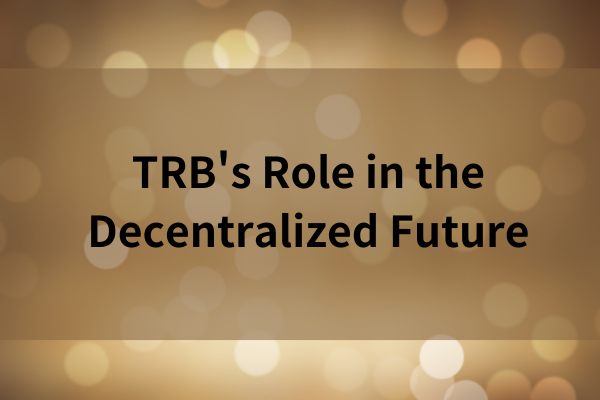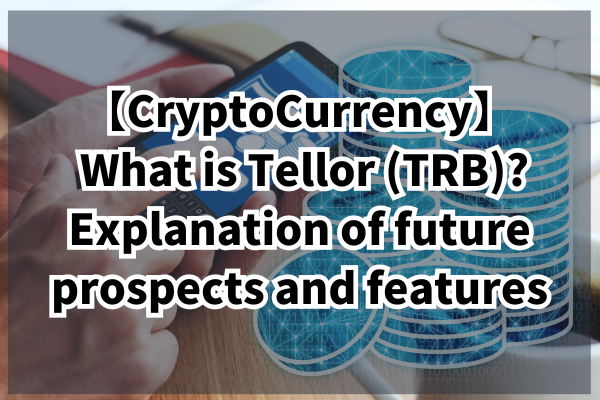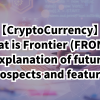In the ever-evolving landscape of cryptocurrencies, a multitude of digital assets have emerged, each with its unique features and use cases. Among these, TRB cryptocurrency has garnered significant attention in recent times. TRB, short for Tellor, is a decentralized oracle network and cryptocurrency that plays a pivotal role in connecting blockchain smart contracts with real-world data. In this article, we will explore the fascinating world of TRB cryptocurrency, examining its history, technology, use cases, and the broader implications it holds for the blockchain ecosystem.
Detailed Articles are here
https://bitcastle.io/column/en/post-10874/
目次
The Genesis of TRB
|
Name |
Tellor |
|
Token Symbol |
TRB |
|
Price |
$59,704,436 |
|
Official page |
|
|
X (Twitter) |
The story of TRB begins with its inception in the tumultuous year of 2019. Two visionary founders, Brendan and Nick, sought to address a critical problem in the blockchain space—the need for a reliable and decentralized source of real-world data for smart contracts. The lack of such a system was hindering the adoption of blockchain technology in various industries.
The Oracle Problem
The oracle problem refers to the challenge of obtaining reliable data from external sources and incorporating it into smart contracts. Blockchain networks are designed to be trustless and immutable, but they lack direct access to real-world information. This limitation necessitated the creation of oracle networks like TRB.
Understanding TRB Technology

Decentralized Oracle Network
TRB operates as a decentralized oracle network, meaning it relies on a distributed network of nodes to fetch, verify, and deliver external data to smart contracts. This decentralization ensures the reliability and security of the data, as it eliminates a single point of failure.
Proof of Work Consensus
TRB employs a proof-of-work (PoW) consensus mechanism, similar to Bitcoin. Miners in the TRB network compete to solve complex mathematical puzzles, and the first one to solve it gets to add the next block to the blockchain and is rewarded with TRB tokens. This PoW consensus ensures the network’s security and integrity.
Staking and Dispute Resolution
Staking is a crucial component of TRB’s ecosystem. Token holders can stake their TRB to become “dispute resolvers.” These individuals play a pivotal role in maintaining the accuracy of the data provided by miners. If a smart contract disputes the accuracy of a data point, dispute resolvers step in to resolve the issue.
Use Cases of TRB

DeFi and Lending
One of the primary use cases of TRB is within the decentralized finance (DeFi) ecosystem. DeFi platforms often require real-time price feeds for assets, and TRB’s decentralized oracle network provides a reliable solution. TRB ensures that lending protocols can accurately determine the value of collateral and make lending decisions accordingly.
Prediction Markets
Prediction markets, which allow users to bet on the outcome of events, rely heavily on accurate and tamper-proof data. TRB’s oracle network enables prediction markets to access real-world data in a trustless manner, enhancing the reliability and security of these platforms.
Insurance
Insurance protocols on the blockchain require precise and
timely information to determine payouts accurately. TRB’s decentralized oracle network facilitates the execution of smart contracts that automatically trigger insurance payouts based on external events, such as weather conditions or flight delays.
Gaming and NFTs
The gaming and non-fungible token (NFT) industries have also embraced TRB. Gaming platforms use TRB oracles to integrate real-world data into their games, creating more immersive and dynamic experiences. NFT marketplaces can verify the authenticity and ownership of digital assets using TRB’s decentralized data.
Challenges and Criticisms

No cryptocurrency project is without its challenges and criticisms, and TRB is no exception.
Scalability
Like many PoW-based blockchains, TRB faces scalability concerns. As the network grows, the number of transactions per second may become a limiting factor. Efforts are underway to address this issue, with potential solutions including layer 2 scaling solutions.
Competition
TRB operates in a competitive space with other decentralized oracle networks like Chainlink and Band Protocol. These competitors have established themselves in the market, making it essential for TRB to continually innovate and differentiate itself.
Centralization Risks
Despite its decentralized nature, there are concerns about centralization risks within TRB’s network. The concentration of mining power among a few large players could potentially compromise the network’s security and decentralization.
TRB’s Role in the Decentralized Future

As the cryptocurrency and blockchain ecosystem continues to mature, the role of decentralized oracle networks like TRB becomes increasingly significant. They bridge the gap between the digital realm of smart contracts and the real-world data required for these contracts to function effectively.
Enabling Real-World Integration
TRB and similar projects enable the seamless integration of blockchain technology into real-world applications. This has profound implications for industries such as finance, insurance, supply chain, and more, as they can leverage the security and automation of blockchain technology while still relying on trustworthy external data.
Trustless Transactions
One of the fundamental principles of blockchain technology is trustlessness. TRB’s decentralized oracle network helps maintain this trustlessness by ensuring that the data used in smart contracts is reliable and tamper-proof. This is essential for the continued growth and adoption of blockchain in various sectors.
Decentralization as a Paradigm
TRB embodies the broader shift towards decentralization as a paradigm. The cryptocurrency space was born out of a desire to reduce reliance on centralized intermediaries, and TRB is a prime example of how this vision is being realized in the realm of data provision and verification.
Future Developments and Roadmap
TRB’s development team continues to work on improving the network’s capabilities and addressing its challenges. Some potential developments and enhancements on the horizon include:
Layer 2 Solutions
To address scalability concerns, TRB may implement layer 2 scaling solutions like sidechains or state channels. These solutions could significantly increase the network’s transaction throughput without compromising security.
Cross-Chain Integration
As interoperability between different blockchains becomes increasingly important, TRB may explore options for cross-chain integration, allowing its oracle network to serve multiple blockchain ecosystems.
Governance Upgrades
Decentralized governance is a crucial aspect of TRB’s ecosystem. Future upgrades may focus on improving the governance model, ensuring that decisions are made in a decentralized and transparent manner.
Conclusion
TRB cryptocurrency represents a pioneering step in the evolution of blockchain technology. Its decentralized oracle network addresses a critical need in the blockchain space, allowing smart contracts to access and rely on real-world data with confidence. As TRB continues to grow and evolve, it holds the potential to revolutionize various industries by enabling trustless, secure, and automated transactions.
In the world of cryptocurrency, where innovation is constant and the landscape is ever-changing, TRB stands as a testament to the power of decentralized solutions in unlocking the full potential of blockchain technology. As it navigates the challenges and competition ahead, TRB remains a project to watch for its potential to reshape the future of decentralized finance and beyond.



